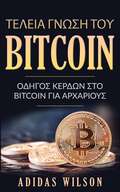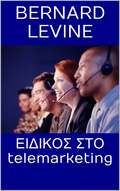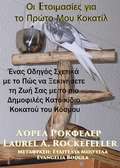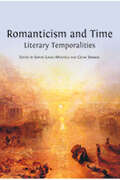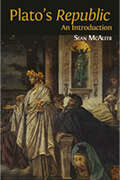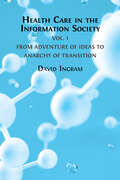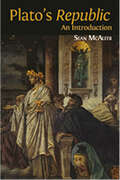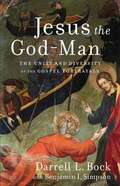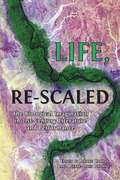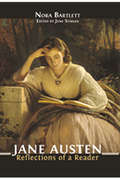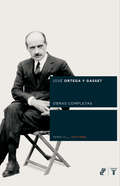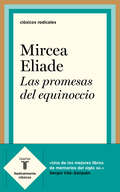- Table View
- List View
Τέλεια γνώση του Bitcoin: Οδηγός κερδών στο Bitcoin για αρχάριους
by Adidas WilsonΤο Bitcoin είναι ένα κρυπτονόμισμα και σύστημα ψηφιακών πληρωμών που επινοήθηκε από κάποιον άγνωστο προγραμματιστή ή ομάδα προγραμματιστών, με το ψευδώνυμο Satoshi Nakamoto. Κυκλοφόρησε ως λογισμικό ανοικτού κώδικα το 2009. Το σύστημα στηρίζεται στη διομότιμη επικοινωνία, και οι συναλλαγές λαμβάνουν χώρα μεταξύ των χρηστών άμεσα, χωρίς μεσάζοντα. Οι συναλλαγές αυτές επαληθεύονται από δικτυακούς κόμβους, και καταγράφονται σε ένα δημόσιο κατανεμημένο καθολικό που ονομάζεται αλυσίδα συστοιχιών (blockchain). Επειδή το σύστημα λειτουργεί χωρίς κεντρικό αποθετήριο ή έναν μοναδικό διαχειριστή, το bitcoin χαρακτηρίζεται ως το πρώτο αποκεντρωμένο ψηφιακό νόμισμα. Παρότι έχει δημιουργηθεί ως αμοιβή για εξόρυξη, το bitcoin μπορεί να ανταλλαχθεί με άλλα νομίσματα, προϊόντα, και υπηρεσίες, είτε σε νόμιμες αγορές, είτε στη
ΕΙΔΙΚΟΣ ΣΤΟ TELEMARKETING
by Bernard Levine KonstantinosΠώς θα κλείσετε άμεσα πολλά ραντεβού για να αυξήσετε τις πωλήσεις σας. Αν θέλεις να γεμίσεις το ημερολόγιό σου με πολλά ραντεβού για να αυξήσεις τις πωλήσεις σου, αυτό το βιβλίο θα σου προσφέρει άμεσα και εγγυημένα αποτελέσματα.
Οι Eτοιμασίες για το Πρώτο Μου Κοκατίλ
by Λόρελ Α. ΡόκφελερΟι Ετοιμασίες για το Πρώτο μου Κοκατίλ είναι ένας οδηγός που θα βοηθήσει εσάς και τα παιδιά σας να προετοιμαστείτε για να φέρετε στο σπίτι το πρώτο σας κοκατίλ. Αντίθετα με τα περισσότερα βιβλία, αυτό δεν προσπαθεί να καλύψει όλα τα θέματα, αλλά εστιάζει σε αυτά που χρειάζεστε για τη νέα σας ζωή με το πτηνό σας. Γεμάτο με προσωπικές ιστορίες και φωτογραφίες, θα σας δείξει τι σημαίνει να ζεις με κοκατίλ, από την προσωπική μου εμπειρία. Ένα διασκεδαστικό βιβλίο για φιλόζωους! Στο βιβλίο περιλαμβάνονται τα εξής: --Τα κοκατίλ ως κοκατού --Κυρίως κλουβιάΚλουβιά ταξιδιού/νοσηλείας --Πάρκα --Παιχνίδια και πώς να παίξετε μαζί του --Πατήθρες --Δοχεία φαγητού και τροφή --Γνωριμία με ένα νεό ή ντροπαλό κοκατίλ
42 Αερόβιες Ασκήσεις και: Άλλες Ιδέες Για Να Κάνετε Την Άσκηση Διασκεδαστική και Όχι Βαρετή
by Kelli Rae42 Αερόβιες Ασκήσεις και Άλλες Ιδέες Για Να Κάνετε Την Άσκηση Διασκεδαστική και Όχι Βαρετή
An Outline of Romanticism in the West
by John Claiborne IsbellNavigating the landscape of Romantic literature and art across Europe and the Americas, An Outline of Romanticism in the West invites readers to embark upon a literary journey.
Ancient Greek I: A 21st Century Approach
by Philip S. PeekIn this elementary textbook, Philip S. Peek draws on his twenty-five years of teaching experience to present the ancient Greek language in an imaginative and accessible way that promotes creativity, deep learning, and diversity.
The Classical Parthenon
by William St ClairComplementing Who Saved the Parthenon? this companion volume sets aside more recent narratives surrounding the Athenian Acropolis, supposedly ‘the very symbol of democracy itself’, instead asking if we can truly access an ancient past imputed with modern meaning. And, if so, how?
Forms of Life and Subjectivity: Rethinking Sartre’s Philosophy
by Daniel Rueda GarridoForms of Life and Subjectivity: Rethinking Sartre’s Philosophy explores the fundamental question of why we act as we do. Informed by an ontological and phenomenological approach, and building mainly, but not exclusively, on the thought of Sartre, Daniel Rueda Garrido considers the concept of a "form of life” as a term that bridges the gap between subjective identity and communities.
Health Care in the Information Society Vol. 1: From Adventure of ideas to Programme for Reform
by David IngramIn this fascinating book David Ingram traces the history of information technology and health informatics from its pioneers in the middle of the twentieth century to its latest developments. The book is distinctive in its broad scope and coverage and as the eyewitness account of an author who became the first UK professor appointed with the mission to bridge information technology with everyday medicine, health, and care. In this role, he has been a co-founder and leader of two rapidly growing initiatives, openEHR and OpenEyes, which stem from international collaborations of universities, health services and industries. These open source and open platform technologies have struck a widely resonant chord worldwide through their focus on community interest endeavours and open access to their methods and outputs. Set against the history of extremely costly, burdensome, and serially unsuccessful top-down attempts of governments to tackle the domain, the book argues for a greater focus on shared endeavours of this kind, contributing towards a standardized care information utility that incorporates methods and resources evolved, shared, and sustained in the public domain. As information technologies are now at the very core of health care, shaping the relationship between medical services and communities, professions, organisations and industries this book is important reading for politicians, health care academics, administrators and providers, and to anybody interested in the future of health services in the digital age.
Horos: Ancient Boundaries and the Ecology of Stone
by Thea PotterIn Horos, Thea Potter explores the complex relationship between classical philosophy and the ‘horos’, a stone that Athenians erected to mark the boundaries of their marketplace, their gravestones, their roads and their private property.
Jesus and the Making of the Modern Mind, 1380–1520
by Luke ClosseyFor his fifteenth-century followers, Jesus was everywhere – from baptism to bloodcults to bowling. This sweeping and unconventional investigation looks at Jesus across one hundred forty years of social, cultural, and intellectual history. Mystics married him, Renaissance artists painted him in three dimensions, Muslim poets praised his life-giving breath, and Christopher (“Christ-bearing”) Columbus brought the symbol of his cross to the Americas. Beyond the European periphery, this global study follows Jesus across – and sometimes between – religious boundaries, from Greenland to Kongo to China. Amidst this diversity, Jesus and the Making of the Modern Mind, 1380-1520 offers readers sympathetic and immersive insight into the religious realities of its subjects. To this end, this book identifies two perspectives: one uncovers hidden meanings and unexpected connections, while the other restricts Jesus to the space and time of human history. Minds that believed in Jesus, and those that opposed him, made use of both perspectives to make sense of their worlds. This book includes over one hundred images, tables and audio clips.
Jesus the God-Man: The Unity And Diversity Of The Gospel Portrayals
by Darrell L. Bock;with Benjamin I. SimpsonThis clear, compact introduction surveys what the Gospels tell us about who Jesus is by exploring his teachings and actions in their contexts.
Life, Re-Scaled: The Biological Imagination in Twenty-First-Century Literature and Performance
by Liliane Campos and Pierre-Louis PatoineThis edited volume explores new engagements with the life sciences in contemporary fiction, poetry, comics and performance. The gathered case studies investigate how recent creative work reframes the human within microscopic or macroscopic scales, from cellular biology to systems ecology, and engages with the ethical, philosophical, and political issues raised by the twenty-first century’s shifting views of life. The collection thus examines literature and performance as spaces that shape our contemporary biological imagination.
Middlemarch: Epigraphs and Mirrors
by Adam RobertsIn Middlemarch, George Eliot draws a character passionately absorbed by abstruse allusion and obscure epigraphs. Casaubon’s obsession is a cautionary tale, but Adam Roberts nonetheless sees in him an invitation to take Eliot’s use of epigraphy and allusion seriously, and this book is an attempt to do just that.
Obras completas. Tomo III (1917-1925)
by José Ortega y GassetTercer tomo de los diez que reúnen las Obras completas de José Ortega y Gasset, la mayor compilación de los textos del filósofo presentada hasta la fecha. Los primeros seis tomos de estas Obras completas de José Ortega y Gasset reúnen las obras publicadas por el propio Ortega, incluidos muchos textos cuya primera reimpresión se ofrece ahora. Los cuatro tomos siguientes incorporan aquellos textos que habían quedado inéditos a su muerte, muchos de los cuales ven la luz por primera vez. Para la fijación del texto de los seis primeros volúmenes se ha realizado una notable labor de investigación, que ha permitido recuperar numerosos artículos todavía dispersos en diarios y revistas, así como seleccionar las ediciones pertinentes para el cotejo, a fin de depurar el texto de erratas perpetuadas en ediciones anteriores e identificar sustanciales variantes, que se muestran en el apéndice. Tras su consagración en 1914 como la figura más relevante de su generación, el magisterio intelectual de Ortega alcanza una primera fase de plenitud entre 1917 y 1925. Son los años en que da a la imprenta algunas de sus obras más célebres, como España invertebrada (1922), El tema de nuestro tiempo (1923) i La deshumanización del arte e Ideas sobre la novela (1925), en las que avanza en la formulación de su filosofía de la razón vital y aborda desde ella aspectos esenciales de la crisis de la modernidad en la España y en la Europa de aquella hora. En el período que abarca este tercer tomo, Ortega también lleva a cabo algunas de sus empresas culturales más genuinas. En 1917 inicia su colaboración en el diario El Sol, en el que publicará casi toda su obra hasta comienzos de los años treinta y en cuya línea editorial ejercerá una clara influencia, muchas veces por medio de artículos sin firma, e incluso de editoriales, y en julio de 1923 funda la Revista de Occidente, piedra angular de su proyecto intelectual.
Las promesas del equinoccio
by Mircea EliadeEliade recorre su infancia durante la Primera Guerra Mundial, sus primeras amistades y su estancia en Calcuta, que dio lugar a sus estudios de la religión, paralelos a su búsqueda de la espiritualidad. Estudió con el filósofo Dasgupta, vivió en un áshram al borde del Ganges y se inició en el yoga. A su regreso, se incorporó a los círculos intelectuales de Bucarest, escribió sus primeras novelas y artículos y tuvo una vida sentimental convulsa
Studies in Rabbinic Hebrew
by Shai HeijmansThis volume presents a collection of articles centring on the language of the Mishnah and the Talmud – the most important Jewish texts (after the Bible), which were compiled in Palestine and Babylonia in the latter centuries of Late Antiquity. Despite the fact that Rabbinic Hebrew has been the subject of growing academic interest across the past century, very little scholarship has been written on it in English. Studies in Rabbinic Hebrew addresses this lacuna, with eight lucid but technically rigorous articles written in English by a range of experienced scholars, focusing on various aspects of Rabbinic Hebrew: its phonology, morphology, syntax, pragmatics and lexicon. This volume is essential reading for students and scholars of Rabbinic studies alike, and constitutes the first in a new series, Studies in Semitic Languages and Cultures, in collaboration with the Faculty of Asian and Middle Eastern Studies at the University of Cambridge.
Who Saved the Parthenon? A New History of the Acropolis Before, During and After the Greek Revolution
by William St ClairIn this magisterial book, William St Clair unfolds the history of the Parthenon throughout the modern era to the present day, with special emphasis on the period before, during, and after the Greek War of Independence of 1821–33.
